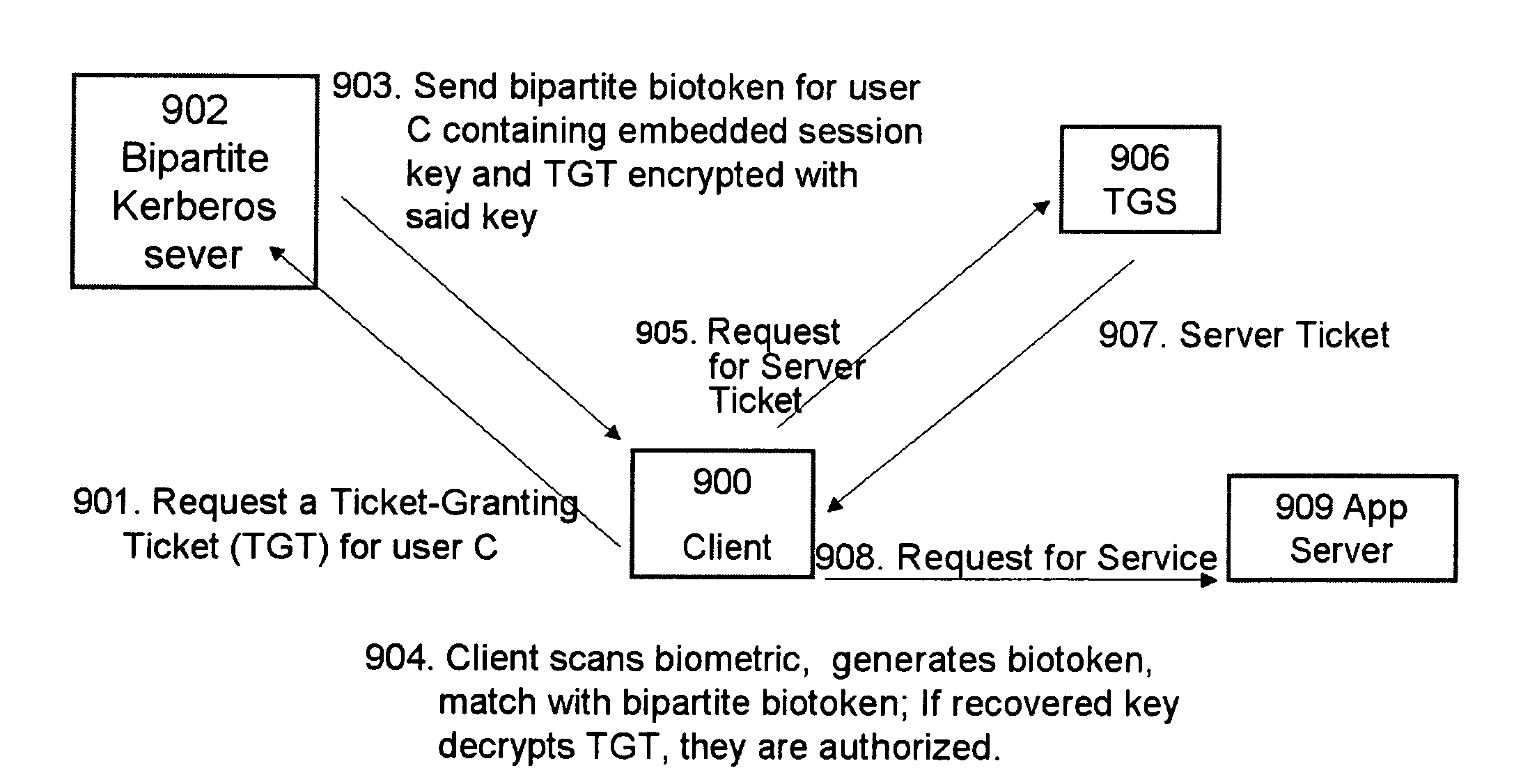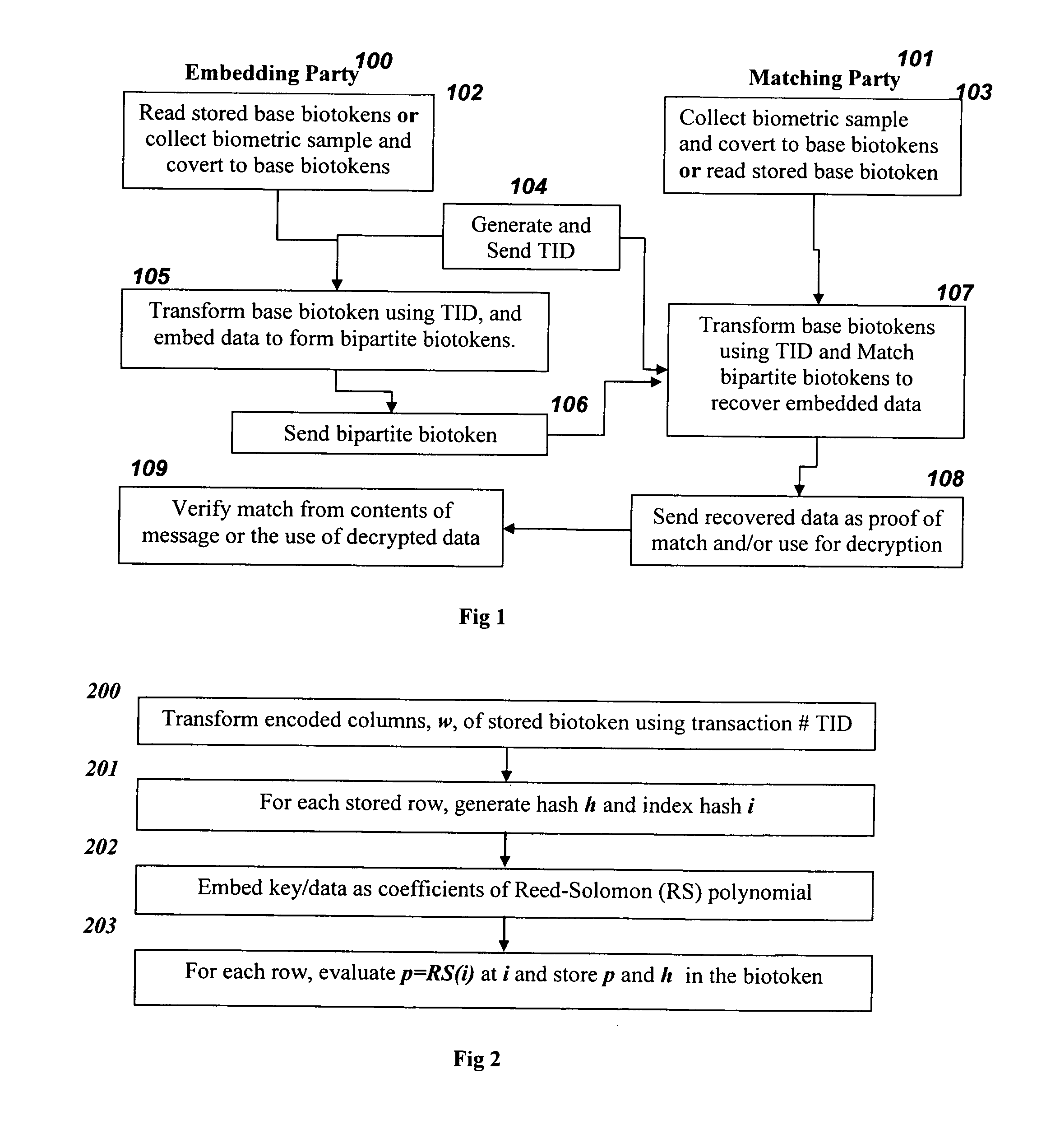Bio-Cryptograhpy : Secure cryptographic protocols with bipartite biotokens
a cryptographic protocol and biotoken technology, applied in the field of biometric signatures and cryptographic key management, can solve the problems of limiting the trust some organizations or people will place in biometric solutions, limiting remote authentication, and not providing sufficient protection of the underlying biometric data to be considered secure, so as to improve security
- Summary
- Abstract
- Description
- Claims
- Application Information
AI Technical Summary
Benefits of technology
Problems solved by technology
Method used
Image
Examples
Embodiment Construction
[0025]Techniques, systems and methods for biometric-based tokens with embedded data, which are unique pre-transaction and protect the embedded key. Broadly stated, embodiments of the present invention utilize a multi-stage transform to embed a key or nonce within a biometric signature such that later matching, with robust distance metrics, against different biometric samples provide means for recovering the embedded key. The transforms and the keys can be unique per transaction.
[0026]Revocable biotokens have emerged as an effective solution to the template protection problem and are described in “Revocable biometrics with robust distance metrics, PCT / US 2005 / 037490, and T. Boult, W. Scheirer and R. Woodworth, “Secure Revocable Finger Biotokens,” In Proc. of the IEEE Conf. on Computer Vision and Pattern Recognition, 2007, and “Robust Distance Measures for Face Recognition Supporting Revocable Biometric Tokens,” by T. Boult, in In Proc. of the 7th IEEE International Conference on Auto...
PUM
 Login to View More
Login to View More Abstract
Description
Claims
Application Information
 Login to View More
Login to View More - R&D
- Intellectual Property
- Life Sciences
- Materials
- Tech Scout
- Unparalleled Data Quality
- Higher Quality Content
- 60% Fewer Hallucinations
Browse by: Latest US Patents, China's latest patents, Technical Efficacy Thesaurus, Application Domain, Technology Topic, Popular Technical Reports.
© 2025 PatSnap. All rights reserved.Legal|Privacy policy|Modern Slavery Act Transparency Statement|Sitemap|About US| Contact US: help@patsnap.com



